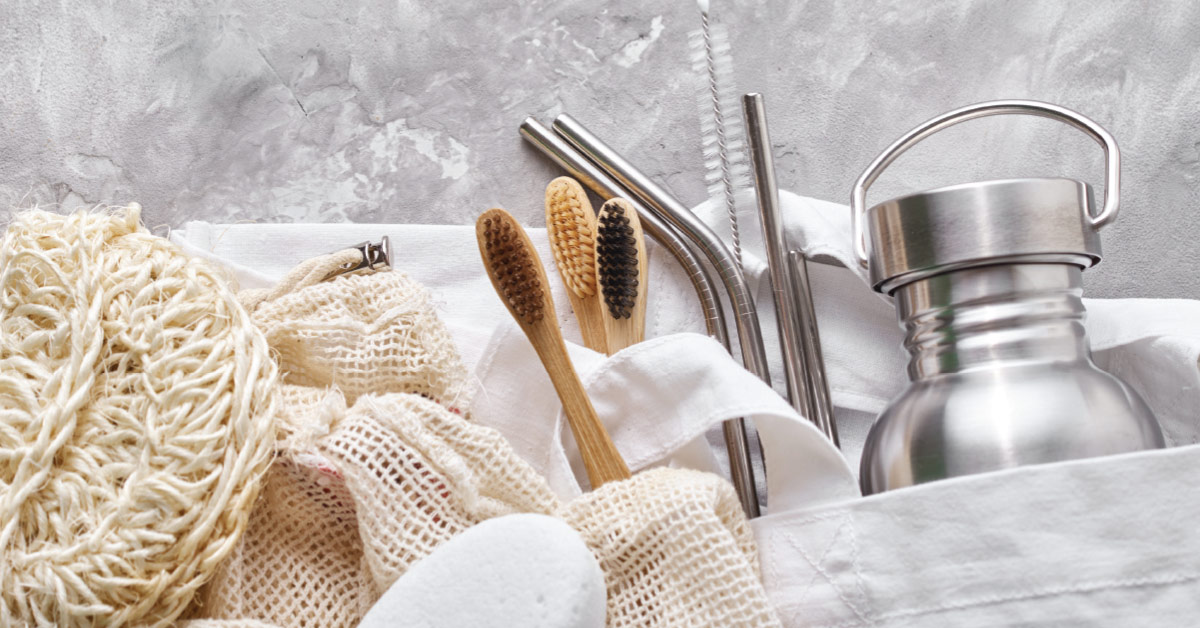Recent research indicates that 63% of people now say that climate change is a very serious issue compared to 49% in 2003, with 46% of consumers also reporting that they're buying more sustainable products to reduce their carbon footprint.
It makes sense then that more and more folks are examining their own lives to see how they can make a difference with their own actions each day.
If you're understandably concerned about the environment and wondering how you can make your home more sustainable for yourself and the world around you this spring, consider some of these tips.
START COMPOSTING
According to the EPA, composting food scraps protects the climate by reducing methane emissions from landfills, increases the nutrient content and biodiversity of microbes in soil, reduces reliance on chemical fertilizers and pesticides and more. Compost items are divided into "greens" (nitrogen-rich materials such as fruit and vegetable scraps, crushed eggshells and coffee grounds) and "browns" (carbon-rich materials like dry leaves, shredded brown bags and plant stalks and twigs).
You can take advantage of "nature's way of recycling" by establishing your own at-home compost set up. What you'll need, steps for getting started, and tips for maintenance can be found at epa.gov/recycle/composting-home.
MAKE THE SWITCH TO REUSABLE PRODUCTS
While it can be an adjustment, swapping single-use products to those that are reusable can help reduce waste, lower your carbon footprint and save you money over time, along with plenty more benefits. It's estimated by scientists that there are about 171 trillion pieces of plastic in the ocean, with a recent study also showing that microplastics were found in the blood of 80% of people tested.
Some common examples of multiple-use home items include cute reusable shopping totes (like those from BAGGU) instead of plastic grocery bags; cloth instead of paper towels and napkins; beeswax wraps instead of plastic cling wrap; silicone baking sheets and food storage bags in place of parchment paper and single-use baggies; washable mop pads instead of disposable options; and wool dryer balls vs dryer sheets. Don't forget a trendy reusable water bottle! Just avoid defeating the purpose by buying more than you need.
INVEST IN ENERGY-EFFICIENT APPLIANCES AND DEVICES
Energy conservation is not only beneficial for the planet by reducing air and water pollution, but it's also good for your wallet. According to the Natural Resources Defense Council, the average U.S. household spends around $2,000 a year on electricity. To reduce your environmental impact and energy costs, consider energy-efficient devices and appliances such as Energy Star–labeled cooling and heating units; smart thermostats; LED light bulbs; heat pump water heaters; windows and more. Find a list of Energy Star devices at energystar.gov/products/products-list.
LEARN WHAT YOUR NATIVE PLANTS ARE AND ADD THEM TO YOUR GARDEN
Did you know? Planting native plants in your yard supports wildlife and enhances your local ecosystem, in addition to offering a reduced level of maintenance (thanks to already being adapted to the local climate and therefore requiring less water and intervention). According to Michigan State University, some plant species that are common to southern lower Michigan include Rose Mallow, Black-Eyed Susan, Wild Columbine, Broad-Leaved Goldenrod, Wild Bergamot and much more.
The National Wildlife Federation's Native Plant Finder is a great starting point if you're looking to learn more about bringing your garden to life by choosing native plants: nativeplantfinder.nwf.org.
Written by Sarah Suydam, Managing Editor for West Michigan Woman.
This article originally appeared in the Feb/Mar '25 issue of West Michigan Woman.




